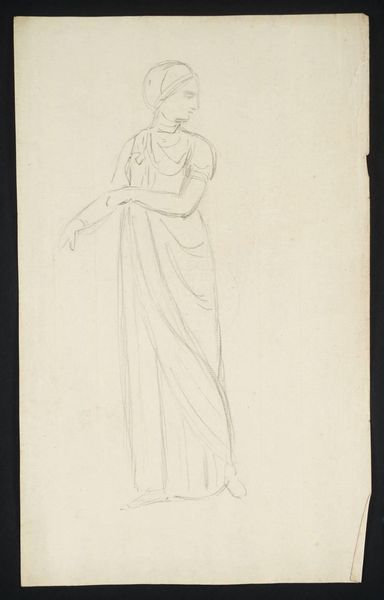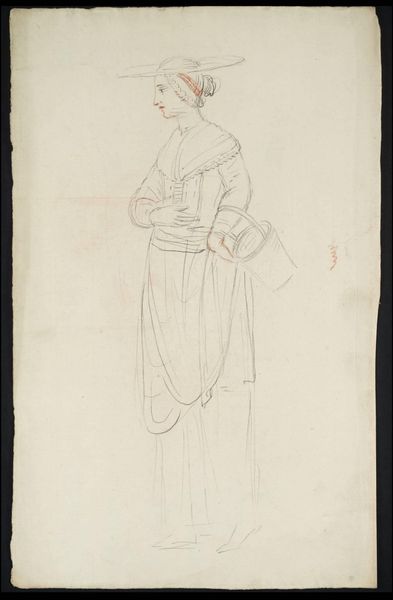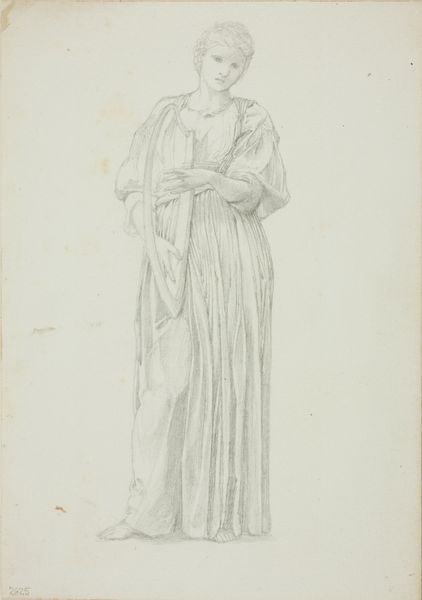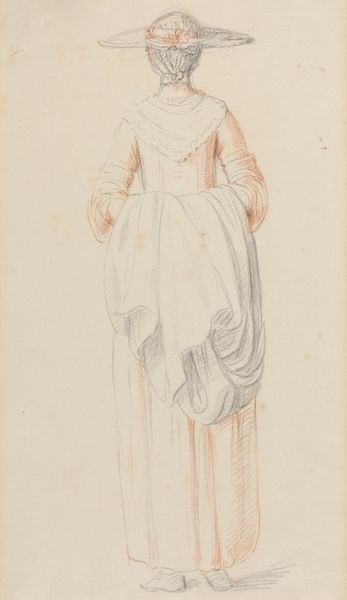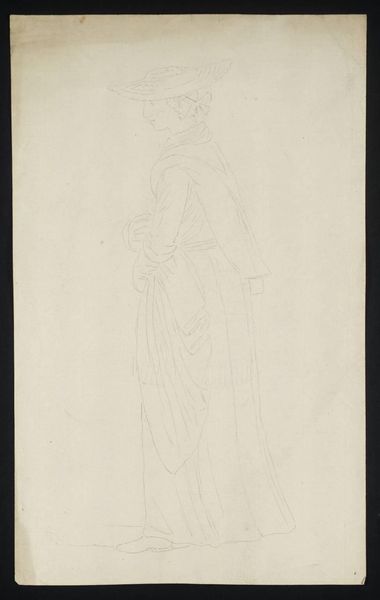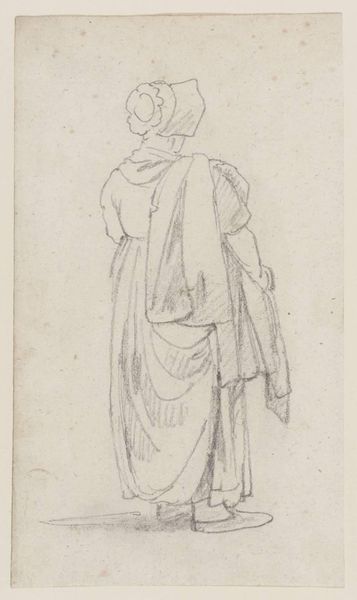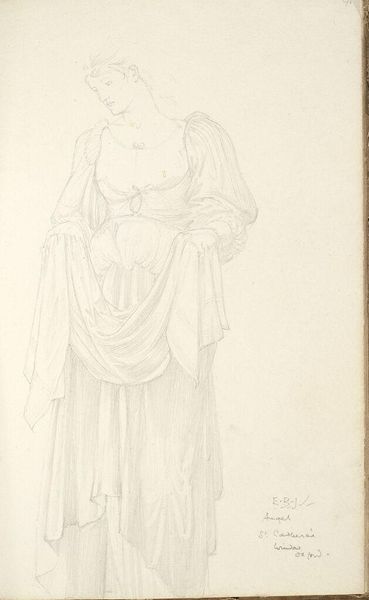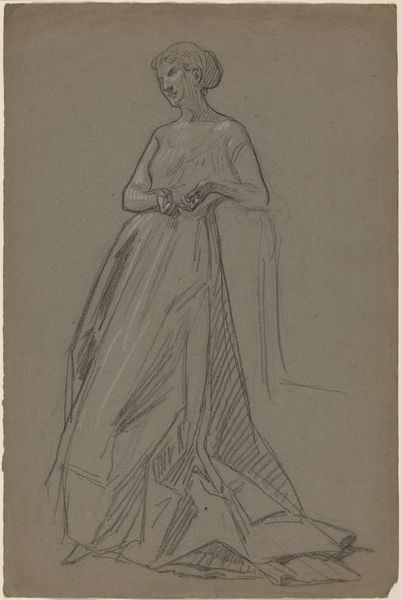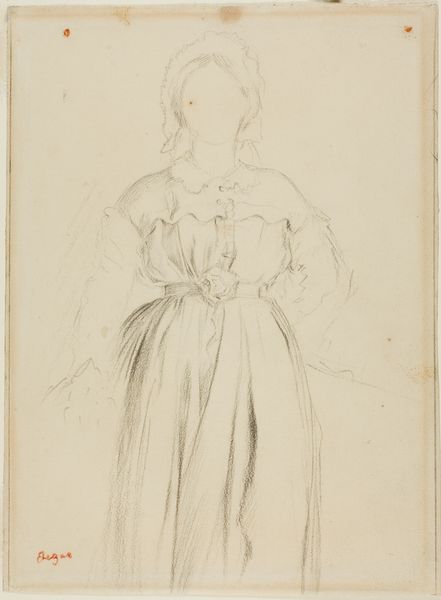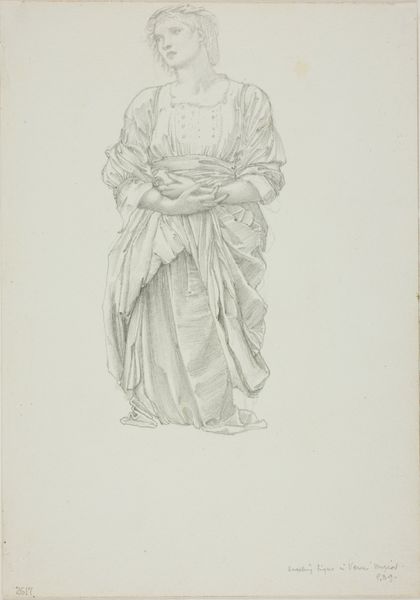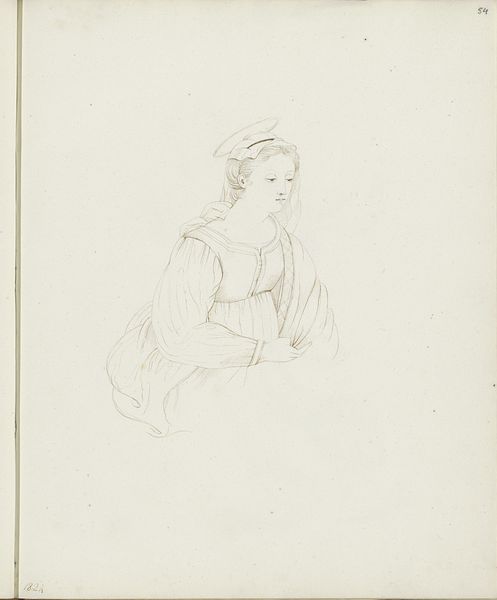![[title not known] by Prince Hoare](/_next/image?url=https%3A%2F%2Fd2w8kbdekdi1gv.cloudfront.net%2FeyJidWNrZXQiOiAiYXJ0ZXJhLWltYWdlcy1idWNrZXQiLCAia2V5IjogImFydHdvcmtzLzMyZjEwZjYwLWI3OWQtNDVhMS05MzA1LWU3OTllZjE5YWY3Zi8zMmYxMGY2MC1iNzlkLTQ1YTEtOTMwNS1lNzk5ZWYxOWFmN2ZfZnVsbC5qcGciLCAiZWRpdHMiOiB7InJlc2l6ZSI6IHsid2lkdGgiOiAxOTIwLCAiaGVpZ2h0IjogMTkyMCwgImZpdCI6ICJpbnNpZGUifX19&w=2048&q=75)
Dimensions: support: 333 x 208 mm
Copyright: CC-BY-NC-ND 4.0 DEED, Photo: Tate
Curator: Looking at this pencil sketch currently held in the Tate, it is believed to be by Prince Hoare, who was active in the late 18th and early 19th centuries. Editor: It’s a very simple composition. The figure, draped in classical robes, seems lost in thought, almost melancholic. The delicate lines create a sense of vulnerability. Curator: The neoclassical style was very popular during Hoare’s time. The figure is idealized, reminiscent of ancient Greek sculptures. This interest in classical aesthetics speaks volumes about the cultural aspirations of the period. Editor: But that idealization can also be problematic. Who gets to be represented in this elevated form? Whose stories are being told, and whose are erased by this emphasis on a particular kind of beauty and virtue? Curator: Absolutely. Consider the artistic institutions of the time. The Royal Academy, for instance, played a significant role in shaping artistic tastes and perpetuating certain ideals. Editor: It makes me wonder about the identity of the woman in the drawing, what her life was like beyond this idealized depiction. Art is never neutral; it reflects the power structures of its time. Curator: A vital reminder that allows us to understand the work within its historical moment. Editor: Yes. And it encourages us to question whose perspectives are missing from the historical record.
